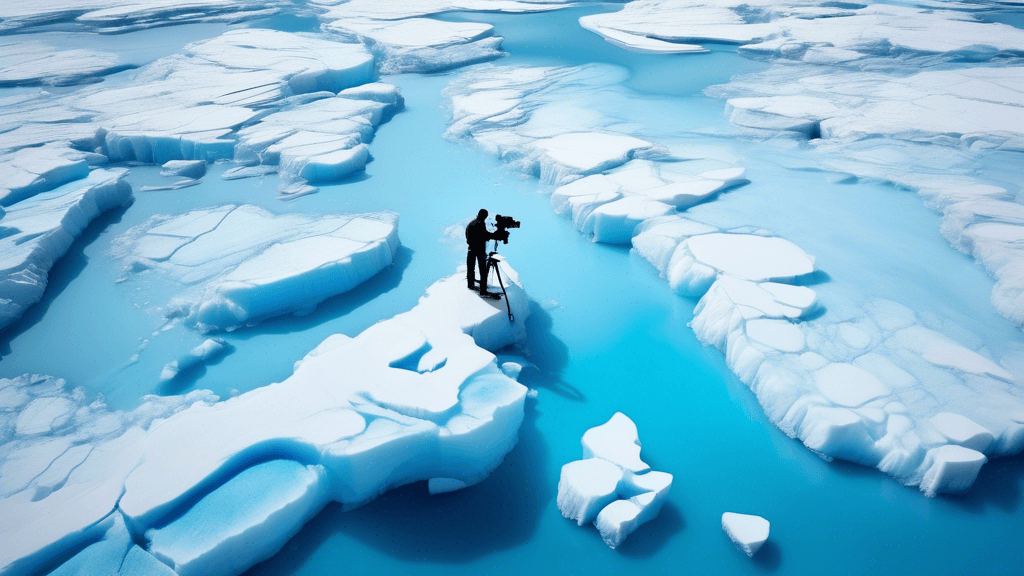
Capturing the Vanishing: Glacier Photography Amid Climate Change
Share
The Power of Images: Glacier Photography in a Warming World
Have you ever wondered about the silent, monumental shifts happening in some of the world’s most remote corners? Glaciers, those majestic ice giants, are shrinking rapidly under the pressure of global warming. But beyond just numbers and figures, glacier photography plays a critical role in visualizing and understanding these changes. Who is this for? Whether you are a photographer, a conservationist, or simply someone passionate about our planet, this exploration into glacier photography amid climate change is pertinent and pressing.
Why Focus on Glaciers?
Glaciers are often seen as indicators of climate health. They are also some of the most visually stunning landscapes, offering a unique challenge and opportunity for photographers. But why should their disappearance concern us? Well, consider this:
- Glaciers are a crucial source of water for many communities around the world.
- They reflect sunlight, helping to moderate global temperatures.
- When they melt, sea levels rise, and this can lead to catastrophic changes in our environment.
Photography of these ice forms not only provides evidence of climate change but also helps to communicate the urgency of the issue to a global audience. Jim Richardson, a photographer who has extensively documented glaciers, once noted, When you see the rate of melting, you can't help but be disturbed. Each photo can serve as both a testament and a warning.
Challenges in Glacier Photography
Glacier photography is not without its difficulties. The remote locations and harsh environments make it a physically demanding pursuit. Moreover, the very subject of the photography is vanishing. Every year, the landscapes are markedly different; glaciers that were once easily accessible are now retreating to higher ground, says Anna Harper, a glacier photographer based in Iceland. These practical challenges are compounded by an emotional toll, as photographers document the disheartening decline of these beautiful landscapes.
Techniques and Tips for Capturing the Vanishing Ice
Glacier photography demands both technical skill and creative foresight. Here are some tips for those inspired to capture these landscapes:
- Respect the environment: Always prioritize the integrity of the natural landscape over getting the perfect shot.
- Use the right equipment: Due to the bright reflections off the ice and vast scale of glacier landscapes, polarizing filters and wide-angle lenses are often invaluable.
- Focus on contrasts: The interplay between light and shadow, ice and rock, can create visually arresting images that highlight the textures and forms of glaciers.
Raising awareness through photography requires an understanding of what makes these scenes compelling. It’s about presenting the glacier in a way that speaks to people personally, explains Harper. Capturing images that resonate emotionally can transform public perception, driving home the reality of climate change impacts.
The Impact of Glacier Photography on Environmental Conservation
A picture is worth a thousand words, but could it also be worth a thousand actions? Glacier photography not only raises awareness but can galvanize community and political action. Seeing the physical changes laid out visually can bridge the gap between scientific data and public sentiment, mentions Dr. Lucy Evans, an environmental scientist.
Such photography can:
- Influence policy decisions by providing undeniable evidence of environmental change.
- Support the work of scientists by documenting changes over time.
- Ignite public interest and passion for conservation efforts.
What then, might we as individuals do about this pressing issue? Beyond appreciating and sharing powerful photographs, we can support policies that aim to reduce carbon footprints and fund conservation projects. As photographers, choosing sustainable practices and spreading knowledge can add to a larger collective effort to mitigate environmental impacts.
Final Thoughts: The Lens as a Tool for Change
Consider this: If glacier photography has the power to move you, might it not move others? Can we, as individuals, harness this visceral reaction to effect real change? Every photograph taken, every image shared, is a step towards greater awareness and action. Let's not be passive viewers but active participants in shaping a sustainable future.
As we look at these vanishing giants through the lens of a camera, let us remember our role not just as bystanders, but as advocates and protectors of our planet. How will you contribute to the narrative of our changing environment?





